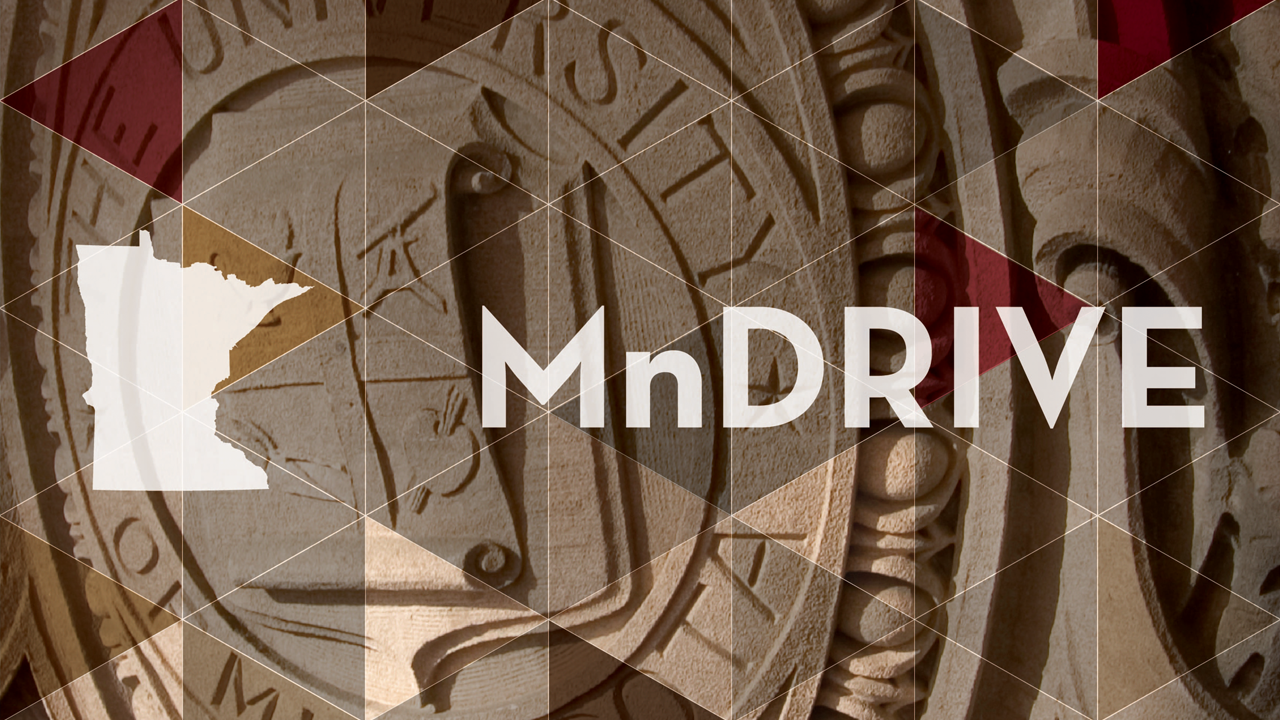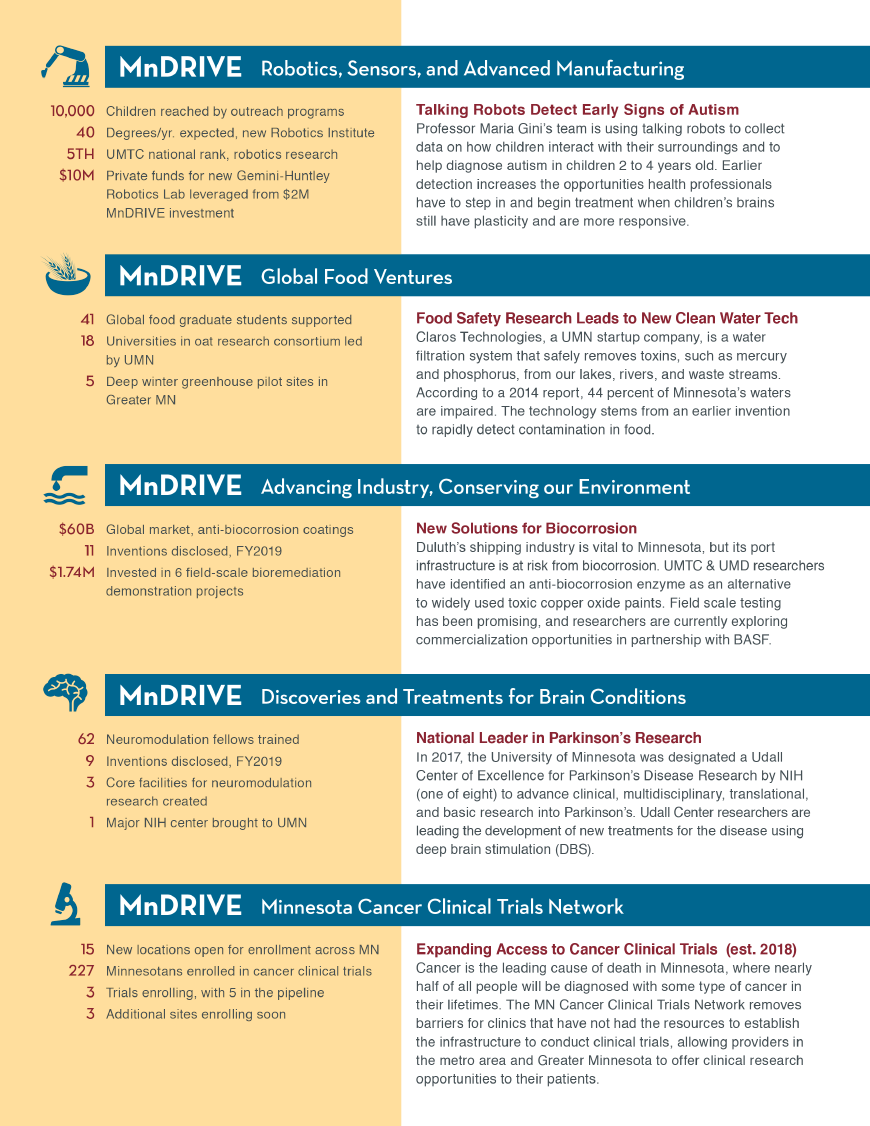
For more than five years, a unique collaboration between the state of Minnesota and its land-grant university has fueled research into some of the greatest challenges now facing Minnesotans.
MnDRIVE—short for Minnesota’s Discovery, Research & InnoVation Economy—began in 2013 as a way to align key University of Minnesota research strengths with vital and emerging state industries to lead Minnesota toward a more prosperous and equitable future. The program focuses on five research areas: Robotics, Global Food, Environment, Brain Conditions, and Cancer Clinical Trials (the last added in 2018). Each area brings experts together from across academic disciplines to explore complex issues, such as harnessing machine learning techniques to guide decision-making in agriculture and the environment, developing new cancer treatments through a statewide network of clinical trials, and stimulating parts of the brain with electric currents to more precisely treat mental illness.
MnDRIVE represents a rare relationship between a state and its public university. By setting aside recurring funding for the program, separate from the U’s operational budget, for the sole purpose of driving high-impact and state-relevant research, Minnesota’s elected officials demonstrated that they recognize the important role discovery and innovation will play in the state’s future, said Christopher Cramer, PhD, the U’s vice president for research.
“As a land-grant university, the U of M is dedicated to supporting the people of Minnesota,” Cramer said. “We are excited and encouraged by elected leaders’ support of University research through MnDRIVE and how that support has driven meaningful progress not only in addressing some of the state’s largest challenges, but in bolstering its key industries.”
Nearly $100 million in state funding was allocated to MnDRIVE in its first five years, helping to attract faculty who are leaders in their fields, hire research staff, renovate lab spaces, purchase equipment, and conduct world-class research with direct relevance to the residents and industries of Minnesota. In that same period, MnDRIVE supported over 400 interconnected research projects involving more than 1,200 researchers and leading to more than 300 new technologies.
In many cases, MnDRIVE projects produce early results that then set researchers up to attract additional funding, allowing them to continue their work and move it in new directions. During the program’s first five years, MnDRIVE projects secured an additional $360 million from federal agencies like the National Institutes of Health, NASA, and the Department of Energy; industry leaders like 3M, Boston Scientific, the Midwest Dairy Association, and Pepsico; and organizations like the Bill & Melinda Gates Foundation.
As one example, the program’s funding set the gears in motion for last year’s opening of the Gemini-Huntley Robotics Research Laboratory—a cutting-edge space in the College of Science and Engineering for research into ground, water, and aerial robotics—by providing $2 million for the project. With this initial investment in-hand, the project then went on to attract over $10 million more in private gifts, leading to its successful completion.
MnDRIVE brings many benefits to the University community. In a recent survey, MnDRIVE-supported researchers reported increased connections with the public and with industry, as well as a greater willingness to take risks to achieve higher societal impacts. The program has supported the U’s climb up the rankings in natural sciences research, while also providing opportunities to educate tomorrow’s high-tech workforce, including through research internships for students from underrepresented minorities in the science, technology, engineering or math (STEM) fields.
Looking forward, Cramer said the program will continue to play an essential role in helping support the people, environment, and economy of Minnesota.
“From the obstacles that accompany a changing climate to the growing health care needs of our state’s aging population, Minnesotans must prepare for the challenges ahead,” he said. “The discoveries and innovations made possible through MnDRIVE are among the tools that will allow us to adapt to these challenges and cultivate a better future.”
Highlights from MnDRIVE Research

See the full MnDRIVE at 5 Fact Sheet or learn about recent developments in MnDRIVE on Twitter.